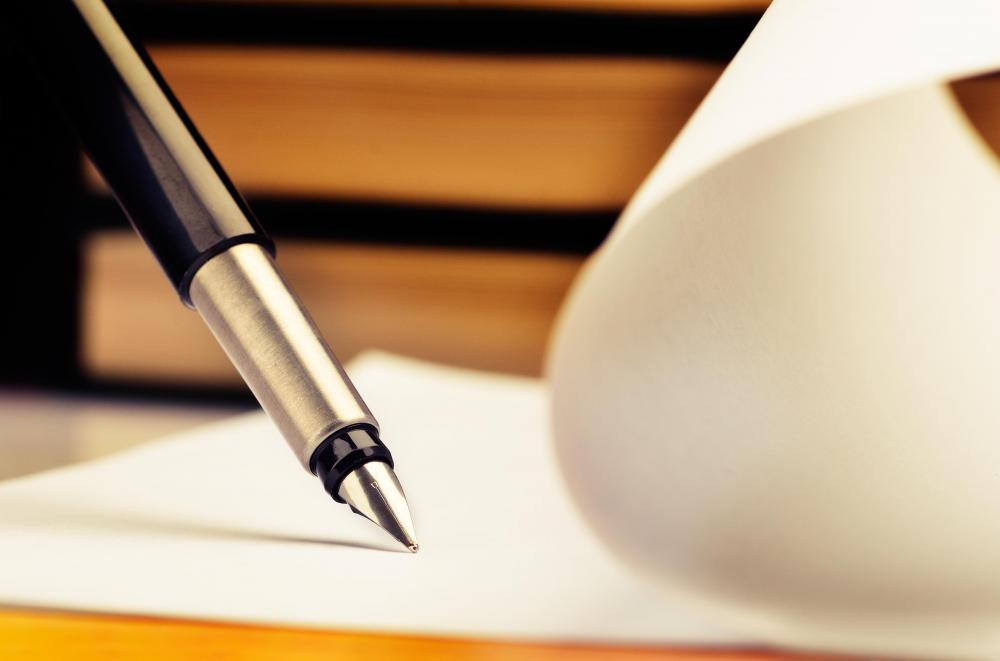At WiseGEEK, we're committed to delivering accurate, trustworthy information. Our expert-authored content is rigorously fact-checked and sourced from credible authorities. Discover how we uphold the highest standards in providing you with reliable knowledge.
How do I Choose the Best Calligraphy Pens?
Writing calligraphy is a beautiful and soothing hobby for many people. Choosing calligraphy pens often depends mostly on the user's personal preference and skill level. Different calligraphy pen handles and tips are available, and on top of that, some pens are dipped into ink, while others have ink cartridges that are inserted into them. The style of the pen may also be important to some people, and there are a number of modern as well as old world styles to choose from.
The first consideration when trying to choose calligraphy pens is comfort. Handles and grips of these pens vary. Some are made from plastic, while others may be made from metal, glass, or wood. Grips are sometimes even covered with soft rubber or cork for added comfort and control.

The size of the handle and grip should not be too large if you have small hands, since it could be rather uncomfortable. The same goes for the weight of the pen. Some experienced calligraphers prefer weighted pens, but beginners are usually advised to start out with light pens. If one pen is more comfortable than another, that is most likely the pen for you.

Nibs are the tips of calligraphy pens that fit into the end of the pen grips. This section of a calligraphy pen is where the pen meets the paper and the ink comes out. There are also a staggering number of different types of nibs available on the market.
Broad nibs are also known as broad-edge or chisel-edge nibs, and the edges of these can either be straight across or diagonal. Line thickness is altered when the pen is turned or angled in one direction or another.
Pointed nibs have sharp points at the end, and are typically more flexible than broad nibs. These are more likely to rip paper. Lines can either be made thicker or thinner by the amount of pressure applied. When a person presses down hard, it will make a thicker line, but if he applies light pressure, a very thin line is the result. There are also a couple of ways that the ink gets to the nib.
Dip pens are the more traditional types of calligraphy pens, and as their name suggests, these pens are dipped into ink before writing. Cartridge pens are a little less messy. These have small glass or plastic ink cartridges that usually attach to the top of the nib. Calligraphy markers are a good choice for beginners who aren't yet ready to invest in all the calligraphy tools available.
Individuals who want an old world look for their pens can choose from a couple of the more classic styles available. Bamboo reed calligraphy pens were one of the first types of pens, and they are carved from bamboo reeds. Quill calligraphy pens were created around the Middle Ages, and they are carved from the ends of feathers.
One of the best ways to choose the right calligraphy pen is to try a few. Unless you know someone who does calligraphy as a hobby, your best bet for this would be a calligraphy or art supply store. Some stores that sell calligraphy supplies allow potential customers to try out different items before they buy them.
AS FEATURED ON:
AS FEATURED ON:












Discuss this Article
Post your comments